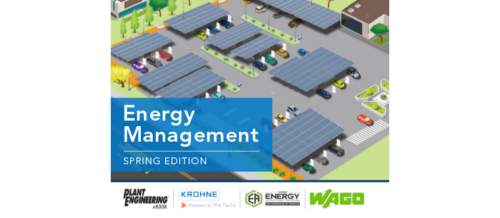Three strategy tips for optimizing your next energy assessment
Better energy assessments improve a plant's overall optimization and provides better data insights.
Industry leaders optimize their competitive advantage by committing to periodic reviews of energy usage. Such assessments involve in-depth critical thinking and analysis to mine the depths of the assessment’s opportunities to unlock value with efficiency optimization. A well-run plant often has a laser focus on their primary mission, but can benefit from a fresh set of eyes with a broader focus.
Three energy assessment strategies to consider
When it comes to performing an energy assessment, it might seem overwhelming at first glance. Following these three steps can provide companies a guideline to follow.
1. Critically collect and evaluate data. There are various ways to collect data that may intrigue leaders and capture their attention. For example, with chemical or industrial facilities, leadership tend to be well-versed in basic instrumentation and collection techniques. New instrumentation technology, some of it temporary and non-invasive, may not be as familiar to decision makers. These instruments may not be applicable to all systems and may not be the best for process controls. However, these non-invasive instruments can be useful in gathering data for energy studies because they provide a broader system view. Do not assume equipment capacity is based on current needs as some equipment may have been “repurposed” or selected based on “future” demand scenarios or even short delivery times to fill an urgent need.
2. Rent the right instrumentation. Many leaders will not immediately think that unique or cutting-edge diagnostic instruments should be rented because stakeholders often have a long-term focus on the cost and placement of instrumentation. However, there is significant value that can be added by renting some instruments in order to conduct energy studies on a system, easily justifying the one-time cost.
For example, some flow sensors can be used in a noninvasive manner to gather data such as with ultrasonic flow devices. Many of these sensors can simply be strapped to the outside of existing piping.
Portable analytic instruments can be installed for a month to get more composition data on streams that customarily are not consistently monitored, such as waste streams. With wastewater, it can be difficult to meet treatment targets, as often there is a lack of information about composition and variability. A portable analytic system can be used to sample different streams for a specified period of time to identify increases and decreases in decomposition and look for patterns.
It may be cost prohibitive to buy a portable system for permanent use, but it can be cost effective if stakeholders have already identified streams that need attention. Depending on the size and complexity of the facility, the operations team may find this is a tool they want in their every-day tool kit.
3. Seek out hidden opportunities. When conducting an assessment, it is important to look for hidden opportunities. These opportunities can emerge simply because new data and focus reveal missed opportunities, unintended consequences or promising upgrade opportunities to long ignored systems.
For example, one system in most plants that doesn’t get a lot of attention when it’s working is the cooling water system, especially an evaporative system. The three most expensive elements of a cooling system are the energy required to move water around, the cooling water that has to be replaced, and the chemicals that keep water properly treated.
One of the opportunities to optimize efficiency is to filter or concentrate the water being removed. These systems often get ignored until technicians are told they can’t use any more water, or until price increases or limits constrain expansion. Technicians don’t want to fix what is not broken. But when project team leaders talk about efficiencies, decision makers are trying to fix what may not be broken by improving on what’s working and fine tune.
With cooling water systems, there can be double savings in chemical usage and water usage. Such systems often go unnoticed because they are continuously running. These systems, when properly assessed, often surprise stakeholders on how much they can save through system and equipment fine tuning.
Such opportunities also can involve a heat exchange system that can function more effectively by rearranging the existing network or installing more efficient heat exchangers.
Wastewater systems can be evaluated to determine if there are streams that should be going to a biological wastewater system, and those that shouldn’t. Water savings can be realized by gathering data on stream usage, channeling the use of some streams in other places, or squeezing value out of water by using it in different ways, such as in cooling towers or as gray water for landscaping.
Hidden opportunities often provide simple choices that can be easily missed. That’s why the assessment process is a critical piece of any planning session. This provides the opportunity for stakeholders to define the necessity to gather data, whether through rented or purchased instrumentation, and assess existing equipment in an effort to improve the overall efficiency and productivity while maintaining costs.
Maximize the potential of savings
Stakeholders maximize their marketplace position by consistently reviewing their use of energy. These evaluations necessitate senior-level analytical thinking to fully explore opportunities to maximize the potential of the planning and assessing initiative.
Being savvy in how a team collects data, identifies, and rents specialized instrumentation, and seeks out hidden opportunities during the assessment process of planning is sure to optimize the next energy assessment.
Do you have experience and expertise with the topics mentioned in this content? You should consider contributing to our CFE Media editorial team and getting the recognition you and your company deserve. Click here to start this process.


